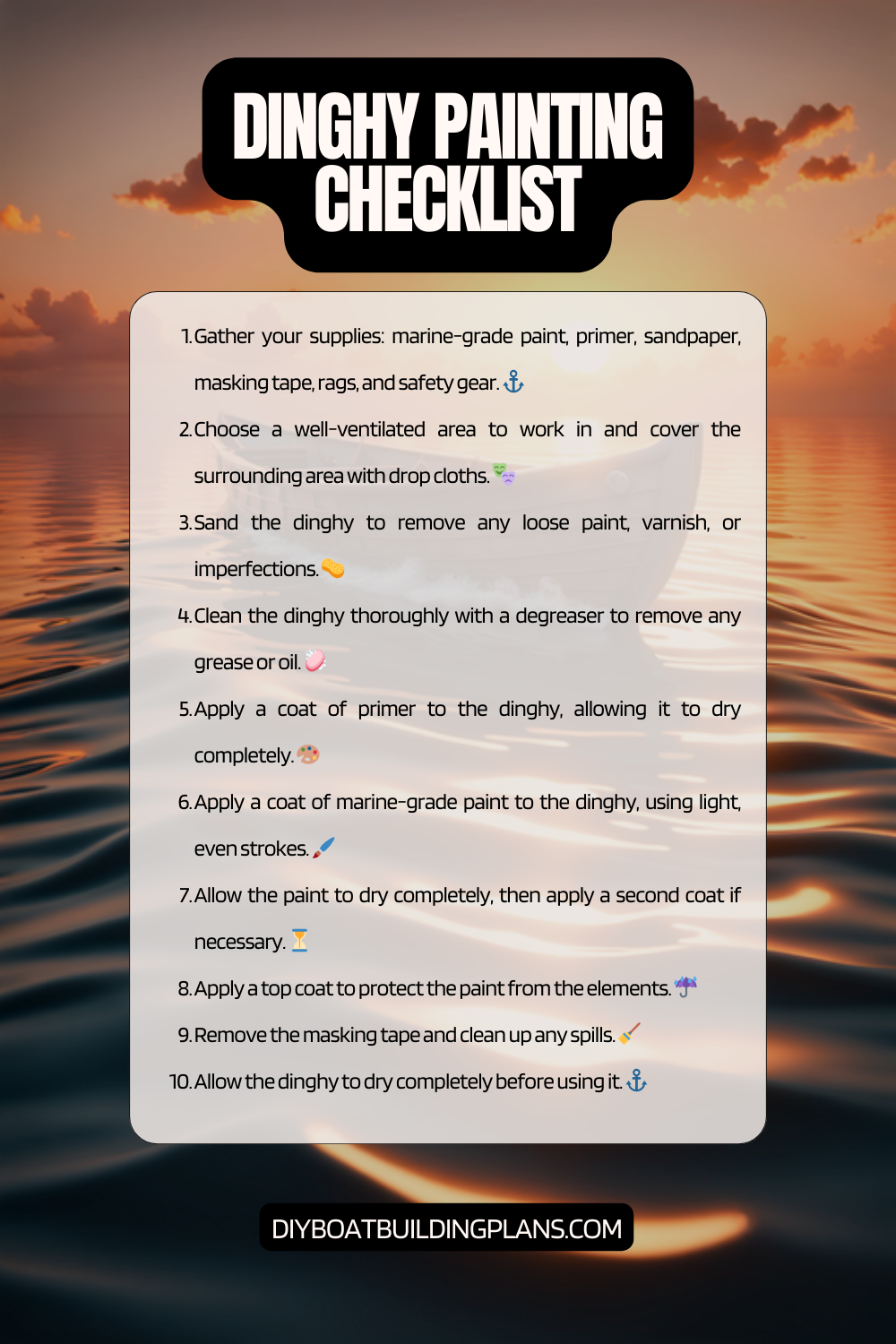Overview of Dinghy Maintenance Tips
A dinghy is a small boat typically used for transportation or recreation. It is important to properly maintain a dinghy to ensure its longevity and optimal performance. Neglecting maintenance can lead to various issues such as decreased efficiency, safety hazards, and costly repairs. By implementing regular maintenance practices, you can extend the lifespan of your dinghy and enjoy its benefits for years to come.
Key Takeaways
- Regular maintenance is crucial for keeping your dinghy in good condition and extending its lifespan.
- Before starting any maintenance, make sure to prepare your dinghy by removing any debris and securing it properly.
- Cleaning your dinghy regularly can prevent buildup of dirt and grime, which can damage the hull and other parts.
- Checking and replacing worn or damaged parts, as well as lubricating moving parts, can prevent breakdowns and ensure smooth operation.
- Proper storage, protection from sun damage, and addressing common problems promptly can help keep your dinghy in top shape.

Importance of Regular Dinghy Maintenance
Regular maintenance is crucial for the overall well-being of your dinghy. One of the key benefits of regular maintenance is improved performance. By keeping your dinghy in top condition, you can ensure that it operates smoothly and efficiently on the water. This not only enhances your boating experience but also increases fuel efficiency, saving you money in the long run.
Neglecting maintenance can have serious consequences. Over time, dirt, grime, and algae can accumulate on the hull of your dinghy, causing drag and reducing its speed. Additionally, failing to check and replace worn-out parts can lead to mechanical failures while out on the water, putting your safety at risk. By prioritizing regular maintenance, you can prevent these issues and enjoy a worry-free boating experience.
Preparing Your Dinghy for Maintenance
Before diving into the maintenance process, it is important to gather the necessary tools and materials. This may include cleaning solutions, brushes, lubricants, replacement parts, and safety equipment such as gloves and goggles. Having everything readily available will streamline the maintenance process and ensure that you have everything you need at hand.
Safety precautions should also be taken into consideration when preparing for dinghy maintenance. Ensure that you are working in a well-ventilated area to avoid inhaling any fumes from cleaning products or lubricants. It is also advisable to wear protective gear such as gloves and goggles to protect yourself from any potential hazards. By taking these precautions, you can ensure a safe and efficient maintenance process.
Cleaning Your Dinghy
| Task | Frequency | Tools Required | Time Required |
| Wash the dinghy | After every use | Bucket, sponge, mild soap | 15-20 minutes |
| Clean the bottom | Once a month | Scrub brush, marine cleaner | 30-45 minutes |
| Polish the hull | Twice a year | Polishing compound, buffer | 2-3 hours |
| Inspect for damage | Before every use | Flashlight, repair kit | 10-15 minutes |
Cleaning your dinghy is an essential part of maintenance. Start by rinsing the boat with fresh water to remove any loose dirt or debris. Next, use a mild detergent or boat soap and a soft brush to scrub the hull, deck, and other surfaces. Pay special attention to areas prone to algae or mold growth, such as the waterline and shaded areas. Rinse the boat thoroughly with fresh water after cleaning to remove any residue.
When choosing cleaning products, it is important to use ones specifically designed for boats. Avoid using harsh chemicals or abrasive cleaners as they can damage the gel coat or paint of your dinghy. Instead, opt for environmentally friendly and biodegradable cleaners that are safe for both your dinghy and the water.
Checking and Replacing the Dinghy’s Parts
Regularly checking and replacing worn-out parts is crucial for maintaining the performance and safety of your dinghy. Start by inspecting the hull for any cracks, dents, or signs of damage. Check the fittings, such as cleats and handles, to ensure they are secure and in good condition. Additionally, inspect the propeller, rudder, and steering system for any signs of wear or damage.
Common parts that may need replacing include the propeller, fuel lines, spark plugs, and battery. It is important to consult your dinghy’s manual or seek professional advice when replacing these parts to ensure compatibility and proper installation. By regularly checking and replacing worn-out parts, you can prevent mechanical failures and ensure a smooth sailing experience.
Lubricating the Dinghy’s Moving Parts
Lubrication is essential for maintaining the smooth operation of your dinghy’s moving parts. Regular lubrication helps reduce friction, prevent corrosion, and extend the lifespan of these components. Some of the key moving parts that require lubrication include hinges, latches, steering mechanisms, and throttle controls.
When it comes to lubrication, it is important to choose the right type of lubricant for each specific part. For example, silicone-based lubricants are ideal for rubber seals and gaskets, while marine-grade grease is suitable for metal-to-metal contact points. Apply the lubricant according to the manufacturer’s instructions and ensure that excess grease or oil is wiped away to prevent accumulation of dirt and debris.
Protecting the Dinghy from Sun Damage
Exposure to the sun’s harmful UV rays can cause significant damage to your dinghy over time. The effects of sun damage include fading of paint or gel coat, cracking or peeling of surfaces, and deterioration of rubber components. To protect your dinghy from sun damage, there are several steps you can take.
Firstly, consider applying a UV protectant or wax to the exterior surfaces of your dinghy. This will help shield the boat from the sun’s rays and prevent fading or cracking. Additionally, using a boat cover when your dinghy is not in use can provide an extra layer of protection. If a cover is not available, try to store your dinghy in a shaded area or use a canopy to shield it from direct sunlight.
Storing Your Dinghy Properly
Proper storage is essential for maintaining the condition of your dinghy during periods of non-use. When storing your dinghy, it is important to keep it in a dry and well-ventilated area to prevent moisture buildup and mold growth. If possible, store the dinghy indoors or under a covered area to protect it from the elements.
When storing your dinghy, ensure that it is properly supported to avoid any stress on the hull or other components. Use padded supports or cradles specifically designed for dinghies to distribute the weight evenly. It is also advisable to remove any detachable parts, such as the battery or fuel tank, and store them separately in a safe and dry location.
Common Dinghy Problems and How to Fix Them
Despite regular maintenance, dinghies can still encounter common problems. One of the most common issues is a clogged fuel line or carburetor, which can lead to engine performance issues or failure to start. To fix this problem, you can clean the fuel line and carburetor using a suitable cleaner or seek professional assistance if needed.
Another common problem is a leaking hull or fittings. This can be caused by cracks, loose fittings, or worn-out seals. To fix this issue, thoroughly inspect the affected area and identify the source of the leak. Depending on the severity of the damage, you may need to apply a sealant or replace the damaged component.
Download over 500 Boat Plans. Click on the link below.
-->Click Here<--
Hiring a Professional for Dinghy Maintenance
While regular maintenance can be done by boat owners themselves, there are instances where hiring a professional is necessary. If you lack the knowledge or experience to perform certain maintenance tasks, it is best to seek professional assistance. Additionally, if you encounter complex issues that require specialized tools or expertise, a professional can provide the necessary solutions.
Hiring a professional for dinghy maintenance offers several benefits. Firstly, professionals have in-depth knowledge and experience in handling various types of dinghies, ensuring that your boat receives the best care possible. They also have access to specialized tools and equipment that may not be readily available to boat owners. Lastly, professionals can identify potential problems before they escalate into major issues, saving you time and money in the long run.
Dinghy Maintenance Checklist

Conclusion – Dinghy Maintenance Tips
In conclusion, maintaining your dinghy is essential for its longevity and optimal performance. Regular maintenance practices such as cleaning, checking and replacing parts, lubricating moving components, protecting from sun damage, and proper storage are key to ensuring your dinghy’s well-being.
By implementing these maintenance tips, you can enjoy a smooth and worry-free boating experience. Regular maintenance not only enhances the performance and safety of your dinghy but also saves you money by preventing costly repairs. So, make it a habit to prioritize dinghy maintenance and enjoy the benefits of a well-maintained boat for years to come.
FAQs – Dinghy Maintenance Tips
What is a dinghy?
A dinghy is a small boat, typically inflatable or made of fiberglass, used for short trips from a larger boat to shore or for recreational purposes.
Why is dinghy maintenance important?
Dinghy maintenance is important to ensure the safety of passengers and to prolong the life of the dinghy. Regular maintenance can prevent costly repairs and replacements.
What are some common maintenance tasks for a dinghy?
Common maintenance tasks for a dinghy include cleaning, checking for leaks, inspecting and repairing the hull, checking and replacing the air valves, and maintaining the engine.
How often should a dinghy be cleaned?
A dinghy should be cleaned after each use to prevent dirt and debris from accumulating. A more thorough cleaning should be done every few months or as needed.
How can I check for leaks in my dinghy?
To check for leaks in a dinghy, inflate it fully and spray soapy water over the surface. If there are any leaks, bubbles will form where the air is escaping.
What should I do if I find a leak in my dinghy?
If you find a leak in your dinghy, mark the location of the leak and deflate the dinghy. Clean and dry the area around the leak, and apply a patch using a dinghy repair kit.
How can I maintain the engine on my dinghy?
To maintain the engine on your dinghy, follow the manufacturer’s instructions for regular maintenance tasks such as changing the oil and spark plugs. Store the engine properly when not in use and avoid running it in shallow water or over rocks.



